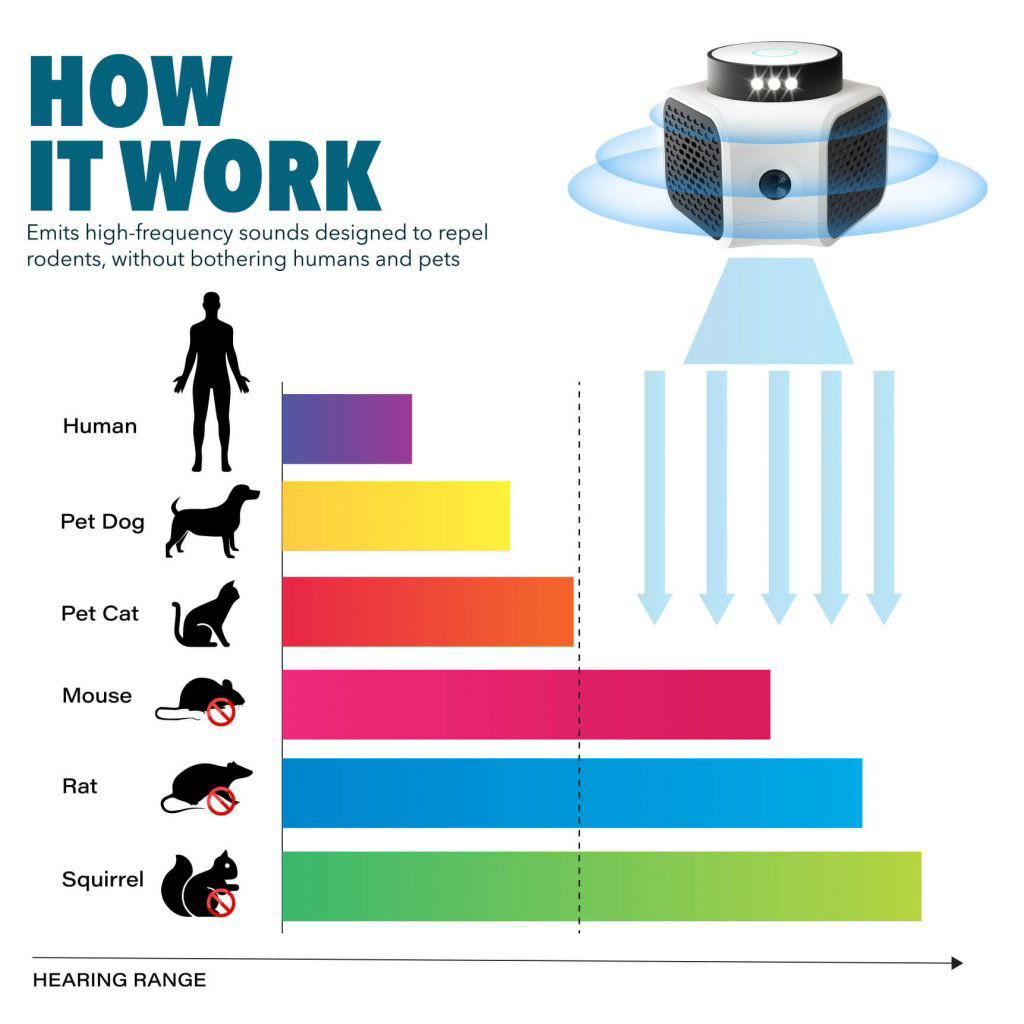Ultrasonic pest repellers have gained popularity as a chemical-free, human-safe method to keep pests at bay.
These devices emit high-frequency sounds that are supposed to be vexing to unwanted bugs and rodents.
But what about our furry friends?
If you’re a pet owner, it’s only natural to be concerned.
Today, we’ll explore whether ultrasonic pest repellers are safe for pets, delving into the science, the types of pets affected, and some tips for ensuring your home remains a safe haven for your beloved companions.
What Are Ultrasonic Pest Repellers?
Ultrasonic pest repellers are electronic devices that produce high-frequency sound waves.
These sound waves are typically beyond the range of human hearing, measuring above 20,000 Hz (hertz) in frequency.
The aim is to drive pests like rodents, insects, and other intruders from your home due to their sensitivity to these frequencies.
How Do Ultrasonic Pest Repellers Work?
- Emit High-Frequency Sound Waves: These sound waves irritate pests, making the environment uncomfortable for them.
- Cover a Specified Area: Usually, one device can cover a room or part of a room, depending on its design.
- Non-Toxic and Chemical-Free: Because these devices do not use any chemical repellents, they are considered safer for homes with children and pets.

Do These Devices Affect All Pets Equally?
Dogs
Dogs have a hearing range that varies between breeds but typically sits around 40 Hz to 60,000 Hz.
While ultrasonic pest repellers work beyond the upper limit of human hearing, they usually fall within the hearing range of dogs.
However, most commercial ultrasonic pest repellers are designed to operate at frequencies that are just bearable or mildly irritating to dogs but not harmful.
Tips for Dog Owners:
- Observe Behavior: If you notice your dog acting unusually—like frequent barking, whimpering, or restlessness—remove the device and see if their behavior returns to normal.
- Placement: Use the repeller in areas less frequented by your dog, such as attics or basements where pest problems are more likely to occur.
Cats
Cats possess an exceptional hearing range that goes from about 48 Hz to 85,000 Hz.
This puts them well within the range of hearing ultrasonic sounds.
Cats are more sensitive to changes in their environment, including noises they find disturbing.
Tips for Cat Owners:
- Monitor Behavior: Look for signs of distress or unusual behavior such as hiding, aggressive scratching, or refusal to enter certain areas.
- Test Placement: Consider placing the device in rooms that your cat does not frequent often.
Small Pets
Small Pets like guinea pigs, hamsters, and rabbits are also quite sensitive to sound, particularly high-frequency ones.
Constant exposure to ultrasonic waves may stress these smaller animals more than it would dogs or cats.
Tips for Small Pet Owners:
- Avoid Close Proximity: Keep ultrasonic devices far from cages or kennels to minimize stress.
- Use Alternative Methods: Explore other pest control methods like traps or natural repellents if you own smaller pets.
Birds
Birds often possess unique hearing ranges that can vary significantly between species.
While some can hear frequencies similar to humans, others might be more affected by ultrasonic waves.
Tips for Bird Owners:
- Observe Closely: Birds might show stress by feather-plucking, loss of appetite, or erratic flying.
- Strategic Placement: Place the repeller away from their cages or regular habitats.
Reptiles and Fish
For reptiles and fish, the impact of ultrasonic waves is less well-documented. However, these pets can be sensitive to vibrations and environmental changes.
Tips for Reptile and Fish Owners:
- Monitor for Stress: Watch out for any unusual behavior, such as lack of movement or feeding changes.
- Proper Placement: Ensure the devices are nowhere near their tanks or terrariums.
General Safety Guidelines
Here are some general tips to help ensure the safety and comfort of your pets when using ultrasonic pest repellers:
- Read the Manual: Ensure you understand the manufacturer’s guidelines, including the recommended frequency for use.
- Gradual Introduction: Introduce the device gradually and monitor your pets’ behavior for any adverse reactions.
- Alternative Methods: Consider combining ultrasonic pest repellers with other non-toxic pest control methods to reduce the frequency and exposure.
- Consult Your Veterinarian: For any persistent issues, consult your veterinarian for advice tailored to your pet’s specific needs.
Conclusion
Ultrasonic pest repellers, while effective and eco-friendly, can potentially affect pets differently depending on their species and individual sensitivities.
By taking the necessary precautions and closely monitoring the behavior of your furry, feathered, or scaled friends, you can create a harmonious environment free from pests and stress for everyone involved.
Lastly, always choose high-quality products from reputable sources, and never hesitate to seek professional advice if you notice any issues.